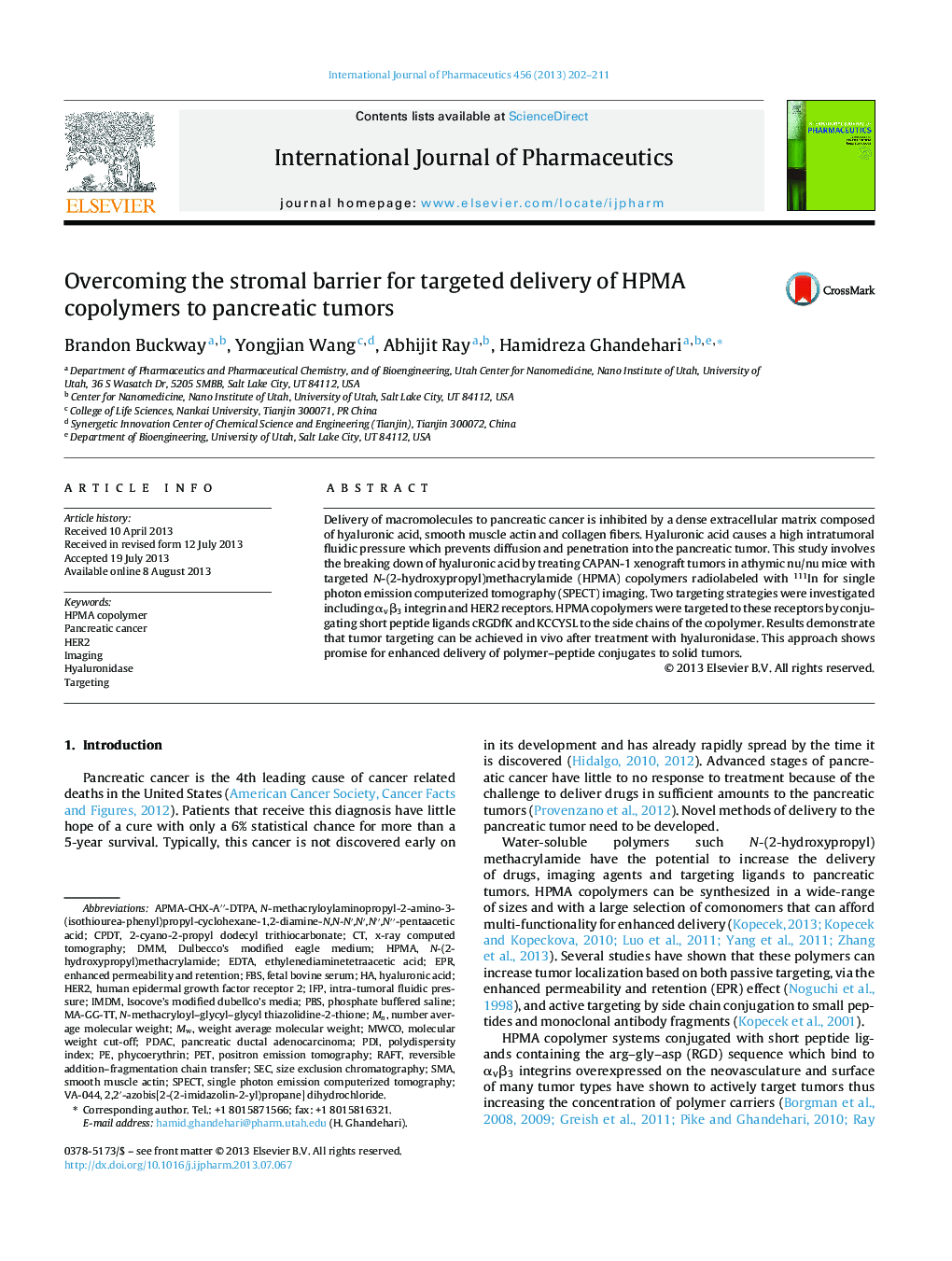| Article ID | Journal | Published Year | Pages | File Type |
|---|---|---|---|---|
| 5820042 | International Journal of Pharmaceutics | 2013 | 10 Pages |
Abstract
Delivery of macromolecules to pancreatic cancer is inhibited by a dense extracellular matrix composed of hyaluronic acid, smooth muscle actin and collagen fibers. Hyaluronic acid causes a high intratumoral fluidic pressure which prevents diffusion and penetration into the pancreatic tumor. This study involves the breaking down of hyaluronic acid by treating CAPAN-1 xenograft tumors in athymic nu/nu mice with targeted N-(2-hydroxypropyl)methacrylamide (HPMA) copolymers radiolabeled with 111In for single photon emission computerized tomography (SPECT) imaging. Two targeting strategies were investigated including αvβ3 integrin and HER2 receptors. HPMA copolymers were targeted to these receptors by conjugating short peptide ligands cRGDfK and KCCYSL to the side chains of the copolymer. Results demonstrate that tumor targeting can be achieved in vivo after treatment with hyaluronidase. This approach shows promise for enhanced delivery of polymer-peptide conjugates to solid tumors.
Keywords
PDIMWCO2,2′-azobis[2-(2-imidazolin-2-yl)propane] dihydrochlorideSECDMMIMDMIFPFBSHPMAHPMA copolymerPBSHER2VA-044Dulbecco's modified Eagle MediumN-(2-hydroxypropyl)methacrylamidePancreatic ductal adenocarcinomaPDAC یا pancreatic ductal adenocarcinomasmooth muscle actinEDTAEthylenediaminetetraacetic acidHyaluronic acidReversible addition–fragmentation chain transferSPECTEPRImagingX-ray computed tomographySingle photon emission computerized tomographyPositron emission tomographySMARAFTPancreatic cancerfetal bovine serumpolydispersity indexphycoerythrinPhosphate buffered salineEnhanced permeability and retentionTargetingHyaluronidaseWeight average molecular weightNumber average molecular weightPETmolecular weight cut-offSize exclusion chromatographyHuman epidermal growth factor receptor 2
Related Topics
Health Sciences
Pharmacology, Toxicology and Pharmaceutical Science
Pharmaceutical Science
Authors
Brandon Buckway, Yongjian Wang, Abhijit Ray, Hamidreza Ghandehari,
